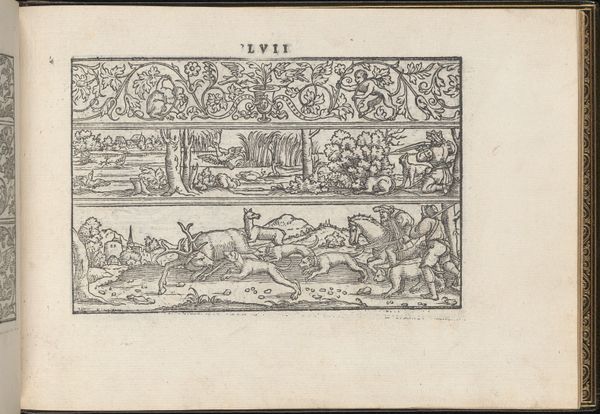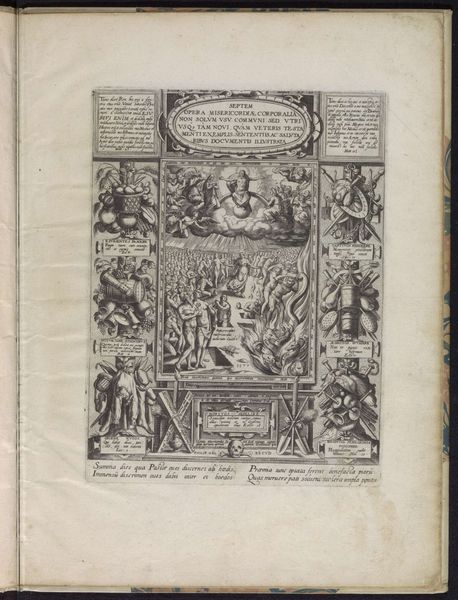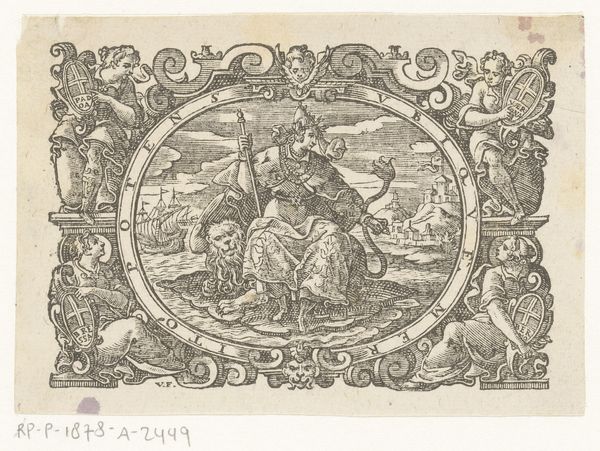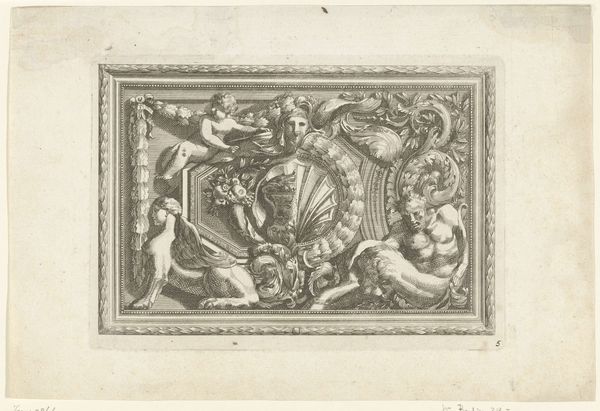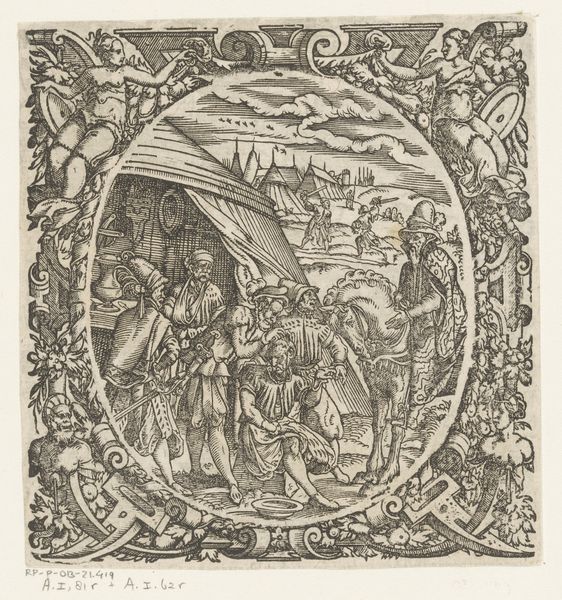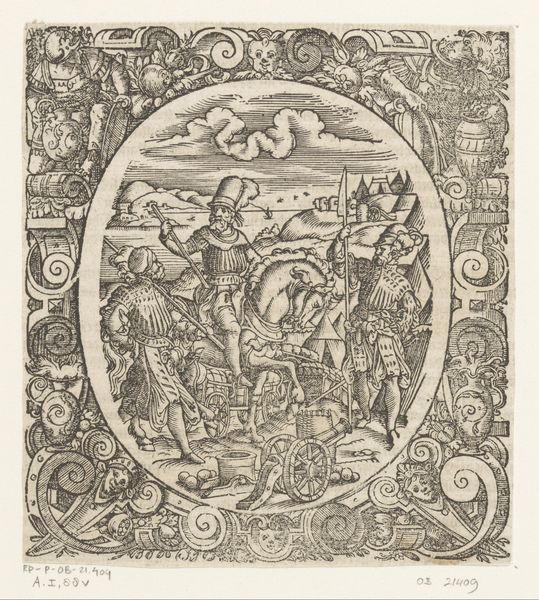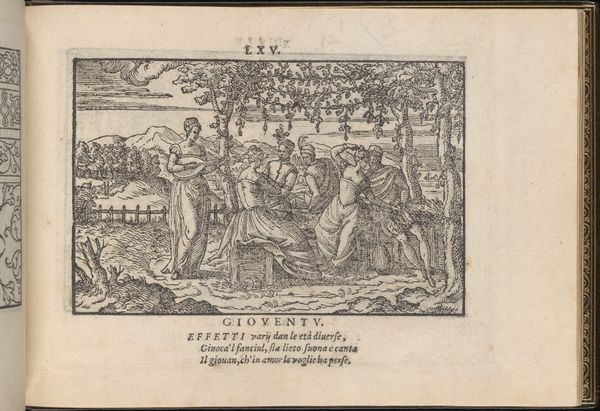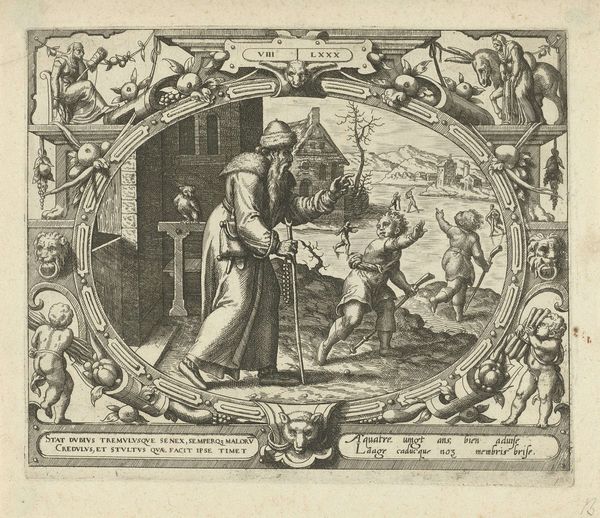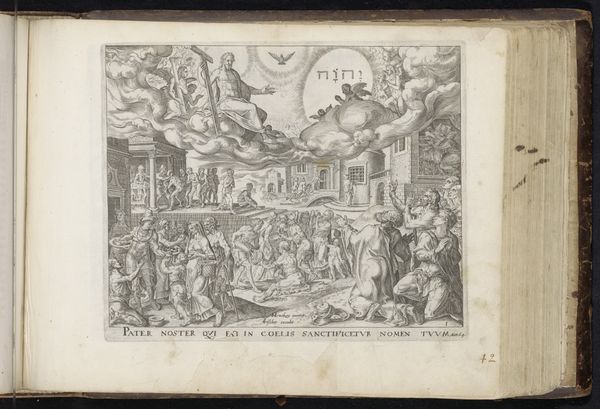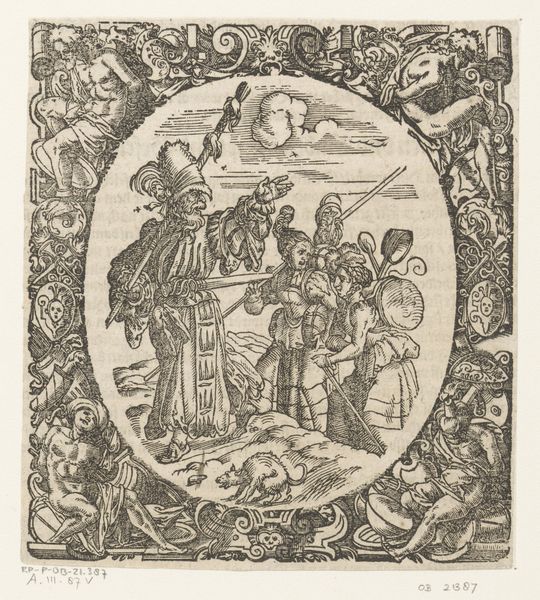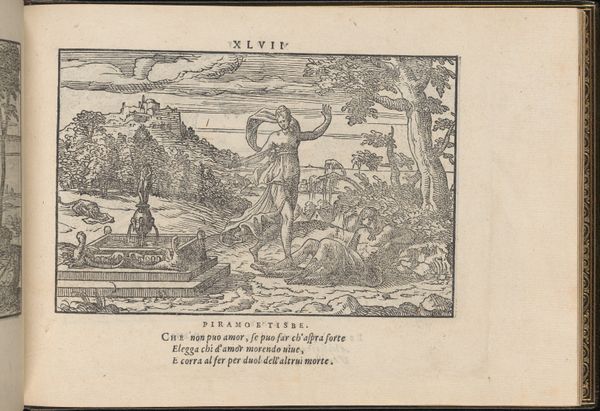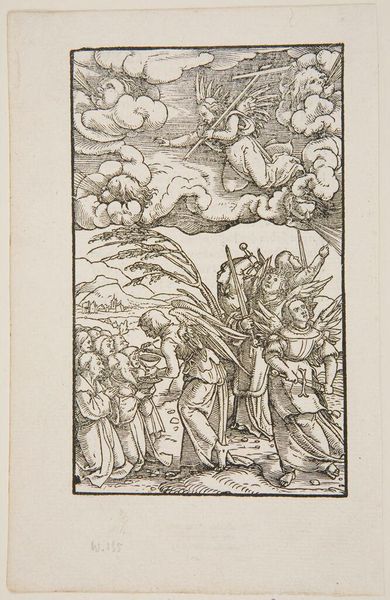
Schöne Figuren auß dem Ovidio (Ovid's Metamorphoses), plate twelve from Woodcuts from Books of the XVI Century c. 1569 - 1937
0:00
0:00
drawing, print, paper, woodcut, engraving
#
drawing
# print
#
paper
#
11_renaissance
#
woodcut
#
history-painting
#
engraving
Dimensions: 99 × 131 mm (image, recto); 133 × 132 mm (image/te×t, recto); 99 × 130 mm (image, verso); 131 × 130 mm (image/te×t, verso); 147 × 198 mm (sheet)
Copyright: Public Domain
Curator: Editor: We’re looking at a print titled *Schöne Figuren auss dem Ovidio*, or *Ovid's Metamorphoses*, plate twelve. It's attributed to Virgilius Solis, the Elder, sometime between 1569 and 1937. It seems to be a woodcut or engraving on paper, depicting a scene of Apollo slaying the Python. There's a very handcrafted, almost folk-art quality to it, especially in the ornate border. How do you react to this piece? Curator: I am immediately drawn to the material reality of this print, and how its very means of production dictates its appearance. We have to consider Solis's role, not just as artist, but as artisan and craftsman engaged in the physical act of carving. What was his workshop like, and who were his collaborators? We can understand that woodcut engraving allowed for mass production that was cheaper than paintings. I suspect the market for this artwork. Is it an art piece for wealthy collectors, or does its creation speak to more egalitarian means of distribution in society? Editor: That's a great point about the labor and access. I guess I hadn't considered the implications of it being a print beyond just the image itself. How would this image circulate? Curator: Exactly. Think about where these prints would have been sold, who would have purchased them, and what function they served in society. Were they bound into books, tacked to walls, or used for other, now-forgotten purposes? The material of paper, and the labor involved in creating the woodcut matrix, directly shaped the image's accessibility and impact. Editor: It changes how you see it, focusing on production and social implications instead of just aesthetics or subject matter. Curator: Precisely. This approach shifts our gaze from the supposed "genius" of the artist to the concrete conditions of artistic creation and the cultural consumption of images. It’s about more than the artwork itself. Editor: Thanks, I've learned a lot. It gives me a completely different lens for interpreting prints, and perhaps art overall.
Comments
No comments
Be the first to comment and join the conversation on the ultimate creative platform.
